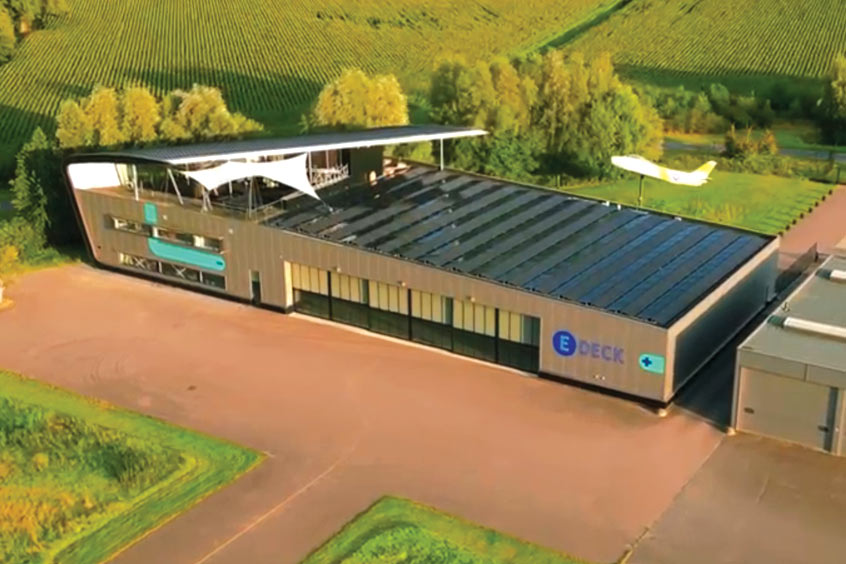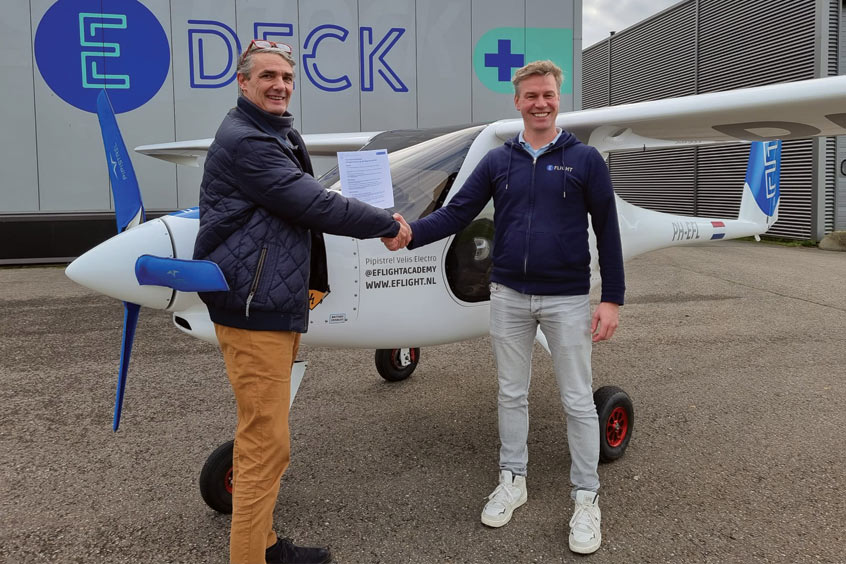ACE 2026 - The home of global charter.
 The bimonthly news publication for aviation professionals.
The bimonthly news publication for aviation professionals.



Hilversum, Netherlands-based aircraft company Cormorant SEAplanes will move to Teuge International airport before the end of this year, into the hangar of E-Deck, an initiative of Dutch entrepreneur Evert-Jan Feld. The choice of this location is obvious since the E-Campus has been developed there since April of last year. This E-Campus should become the centre for everything to do with electric flying in the Netherlands; Cormorant fits seamlessly into the ecosystem there with its contemporary design for an eight-seat, net-zero emission, electric amphibious short to medium-range aircraft.
Until recently, Cormorant had its workshop at Vonk, in de Wijk, a sustainable incubator for startups, but the company has developed so quickly that it has had to look for more suitable accommodation. Early this year, it joined the Scottish Sustainable Aviation Test Environment 2 as an industry partner. From then on, things moved quickly. As part of this project, Cormorant is working with, among others, German companies Leichtwerk in Brunswick and Hoffmann Propeller in Rosenheim. It is also working closely with the University of Glasgow and Robert Gordon University in Aberdeen.
The collaboration at Teuge goes beyond just renting hangar space. E-deck also houses the E-Flight Academy, the world's first electric flight school to fly Pipistrel's fully electric aircraft. These aircraft use electric motors that would seem to suit the Cormorant design. The E-Campus will eventually house a variety of shared research facilities, including virtual and augmented reality technology, hybrid and electric aircraft, battery technology, flight simulators and charging infrastructure.
"The Cormorant has been designed as an amphibious aircraft, allowing it to operate from water and land," says chief designer and CEO Chris Rijff. "The aircraft is powered by a ducted fan situated in the centre of the airframe. The design uses an automated five-blade fan system developed for the RFB [Rhein-Flugzeugbau] Fan Trainer, a military training aircraft developed in Germany in the last century."
Powered by two electric motors of 260kW/h (349hp) each, the Cormorant is designed for a maximum speed of 460km/h with an MTOW of 2,240kg (4,938lb). The cruise speed is lower and varies between 270km/h and 350km/h (145-189kts). To make the electrical power systems suitable for certification (EASA CS23 Level III), they are designed to be dual energy vector; batteries combined with a turbogenerator on SAF, or with liquid hydrogen fuel cells. The aircraft seats seven passengers and a pilot and can be converted to air ambulance or cargo transport modes in minutes. The certified flight distance is around 810km, with a flight endurance of some 3.75 hours.